The Transformation of Actaeon (no date) by Jean Mignon.
More gleanings from one of the better provinces of the Google Empire (unless and until they abandon it…), these being recent additions to the Google Art Project from the Museum Kunstpalast in Düsseldorf.
Jean Mignon’s etching shows Diana’s transformation of Actaeon into a stag as punishment for his catching her bathing. This is one of those scenes where subsequent developments are shown in the background of the same picture, in this case poor Actaeon’s pursuit and death at the jaws of his own dogs. Off to the side there’s the curious detail of a pissing-boy statue like the famous Manneken Pis in Brussels.
Circe Transforms Odysseus’ Companions into Animals (1650–1655) by Giovanni Benedetto Castiglione.
Castiglione’s etching shows another transmutation from Greek myth although these sailors appear to have evaded the usual fate of being turned into swine. The artist gives Circe a wand and a collection of occult tomes.
Lovers in a Grotto, Surrounded by Plants and Herb (c. 1830–1835) by Carl Wilhelm Kolbe the Elder.
Kolbe the Elder’s piece is a strange example of Surrealism avant la lettre in which the garden plants have assumed Food of the Gods proportions. The picture note says this was a specialty of Kolbe’s, and the effect is so striking I’m surprised I’ve not seen it mentioned before as a Surrealist precursor.
Elsewhere on { feuilleton }
• The etching and engraving archive

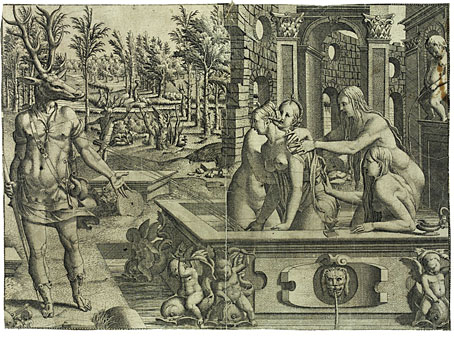
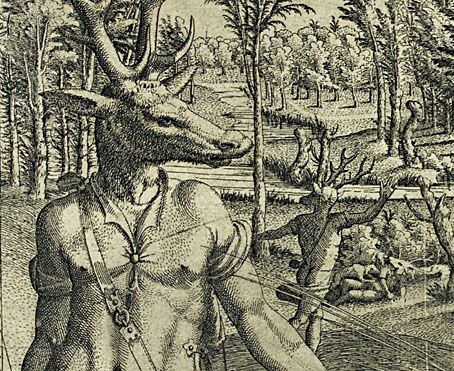
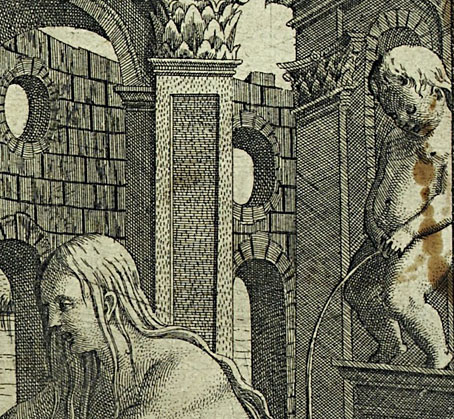
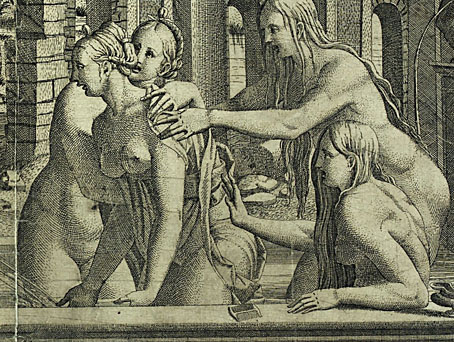
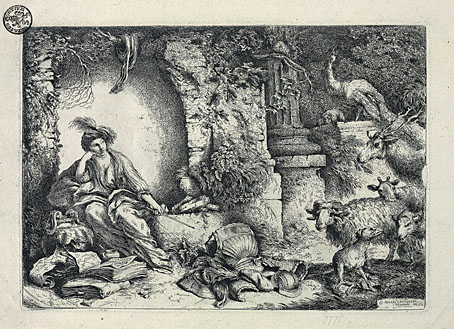
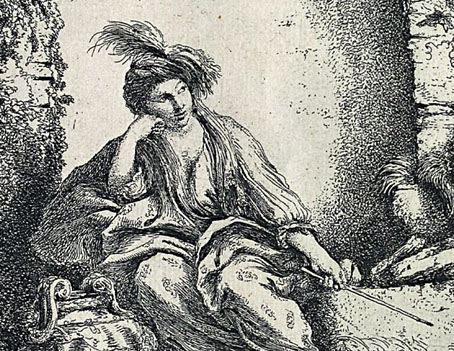
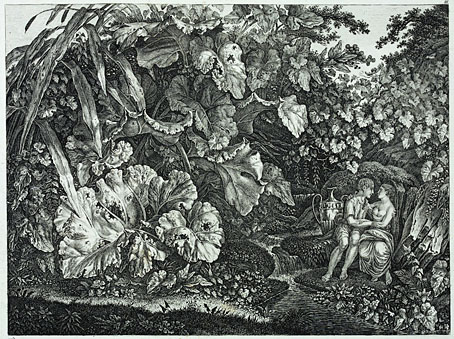
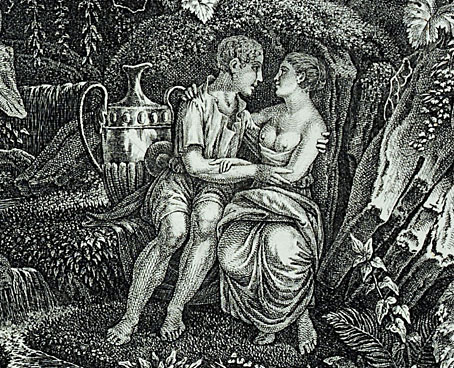
the curious detail of a pissing-boy statue
There’s the pissing-boy fountain in the Hypnerotomachia Polyphili (attended by nymphs). Is that the start of this little trail of art / history references? Or was it in turn inspired by something else?
No, I was browsing the museum collection then noticed a vague theme. It’s a long time since I looked at the Hypnerotomachia, I didn’t remember that detail.
I wasn’t questioning your inspiration; I was inquiring more out of a sense that if my superficial knowledge includes the urinating cupid in the Hypnerotomachia, then there are probably much older precedents known to you or some of the other readers.
The Great Google referred me to this:
http://wtfarthistory.com/post/20842165886/peed-on-by-cupid
Urine is an ingredient of some alchemical operations so you also find alchemical engravings featuring urinating figures. Since so much alchemy is buried under symbolism it’s difficult to say whether this should be taken literally. Same goes for the Hypnerotomachia the very nature of which implies a wealth of concealed meanings in its details.
Say it ain’t so! Have you heard such rumours?
No, that’s just me being pre-emptively pessimistic. I doubt they’d close down this service in a hurry, but they have acquired a habit in recent years of launching things then retiring them a few years later.